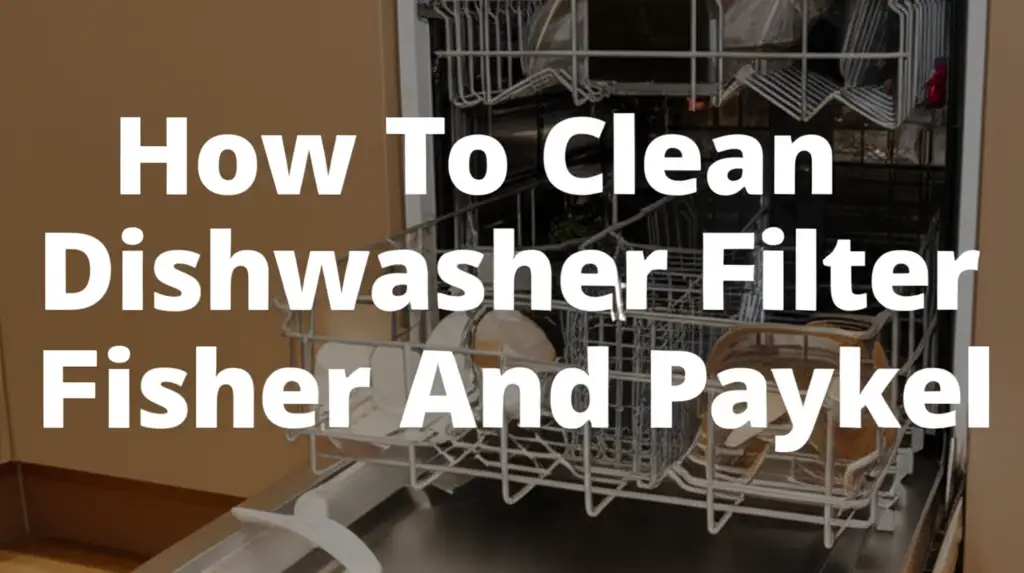· Todd Martin · Home Appliance Maintenance · 18 min read
How To Clean Lg Washing Machine Front Load Tub

Deep Clean Your LG Front Load Washer Tub
A clean washing machine is essential for truly clean clothes. If you own an LG front-load washer, you might notice odors or residue building up in the tub over time. This happens because moisture gets trapped, leading to mildew and grime. Learning how to clean an LG washing machine front load tub is simple but vital for its performance and longevity. I know the feeling of opening the washer door and getting a musty smell. It makes you wonder if your clothes are even getting clean. This guide helps you tackle that problem. We will cover step-by-step instructions for a sparkling clean LG front load tub, ensuring your laundry always comes out fresh.
Takeaway
Keeping your LG front load washer tub clean prevents odors, mold, and residue.
- Run a ‘Tub Clean’ cycle regularly.
- Clean the gasket, dispenser, and filter often.
- Use white vinegar or baking soda for deep cleaning.
- Always leave the door ajar after use to air dry.
To clean an LG front load washing machine tub, run its dedicated ‘Tub Clean’ cycle monthly with a washing machine cleaner or bleach. Manually wipe down the rubber gasket with a damp cloth, clean the detergent dispenser, and check the drain pump filter for debris regularly. This prevents mold and bad smells.
Understanding Why Your Front Load Washer Needs Cleaning
Front-load washing machines are popular for their water and energy efficiency. They use less water than top-loaders. This low water usage means dirt, detergent residue, and lint can accumulate more easily. These residues create a damp environment inside the tub. Over time, this dampness promotes the growth of mold, mildew, and bacteria. You might notice a musty smell. Your clothes may not feel as fresh as they once did. Regular cleaning of your LG front load washer tub fixes these issues. It makes sure your machine runs well. It also keeps your clothes truly clean.
I once wondered why my laundry started smelling off, even after a wash. I soon learned it was my washer itself that was the culprit. The hidden grime and mildew were the source. A clean machine is the first step to clean laundry. Ignoring this can lead to skin irritations. It also reduces the life of your appliance. A routine cleaning schedule ensures your washer performs at its best. It gives you peace of mind that your family’s clothes are truly sanitized.
Essential Tools and Supplies for Tub Cleaning
Before you start cleaning your LG front load washing machine tub, gather all necessary tools and supplies. Having everything ready makes the process smoother. You will need a few common household items. Some specialized cleaning products are also helpful. I always make sure I have these on hand before I begin. This saves me from stopping halfway through the cleaning process.
Here is a list of what you will need:
- White Vinegar: This is a natural disinfectant and deodorizer. Many people use vinegar to clean LG washing machines. Can You Use Vinegar To Clean LG Washing Machine for specific instructions.
- Baking Soda: It helps absorb odors and acts as a mild abrasive.
- Bleach (Optional): Use only if your washer manual allows it for tub cleaning. Check your manual first.
- Washing Machine Cleaner Tablets: Brands like Affresh or Tide Washing Machine Cleaner work well. These are designed for appliance cleaning.
- Microfiber Cloths or Sponges: For wiping down surfaces.
- Small Brush: A toothbrush or bottle brush for tight spots.
- Bucket or Towel: To catch water when cleaning the drain pump filter.
- Gloves: To protect your hands from cleaning solutions.
Having these items ready prevents interruptions. It also ensures you can tackle every part of the cleaning process effectively. This preparation makes cleaning your LG front load washer easy. It helps maintain a healthy home environment.
Running the LG Tub Clean Cycle
Your LG front load washing machine has a built-in cleaning cycle. This is often called “Tub Clean” or “Sanitize.” This cycle is your first line of defense against buildup. It uses hot water and high spin speeds to flush out residue. I make sure to run this cycle at least once a month. It helps maintain freshness. Check your specific LG model for the exact name and instructions for this cycle. The process is usually straightforward.
To run the Tub Clean cycle:
- Empty the Washer: Ensure there are no clothes or items inside the washing machine. This cycle is designed to clean the machine itself, not laundry.
- Add Cleaner (Optional): You can add a washing machine cleaner tablet or a cup of bleach to the detergent dispenser. Do not use both bleach and vinegar at the same time. This creates dangerous fumes. Follow product instructions if using a specialized cleaner. If using bleach, put it in the bleach dispenser.
- Select ‘Tub Clean’: Turn the dial or press the button to select the ‘Tub Clean’ cycle. Some models might require holding a button for a few seconds.
- Start the Cycle: Press the ‘Start/Pause’ button to begin the cycle. The machine will fill, agitate, and drain. It will complete a thorough cleaning of the tub.
- Wipe Down: After the cycle finishes, wipe down the inside of the tub with a clean cloth. This removes any loosened residue.
This automated cycle is very effective. It helps maintain hygiene inside your LG front load washer. This step is crucial for preventing odors and buildup. It keeps your machine running cleanly and efficiently. For general cleaning of LG HE washing machines, this cycle is a major component. How To Clean LG HE Washing Machine provides additional tips.
Cleaning the Gasket and Detergent Dispenser
While the Tub Clean cycle handles the drum, other parts also need attention. The rubber door gasket is a common hiding spot for mold and mildew. Water and lint often get trapped here. The detergent dispenser drawer also accumulates old detergent and fabric softener residue. These areas contribute to odors if not cleaned regularly. I clean these parts after every few washes.
How to Clean the Gasket
The door gasket, or boot, needs frequent wiping. It traps water, lint, and mildew.
- Open the Door Wide: Fully open your LG front load washer door.
- Pull Back the Gasket: Gently pull back the folds of the rubber gasket. Look for mold, mildew, hair, or small objects.
- Wipe Thoroughly: Use a damp microfiber cloth. You can add a solution of equal parts white vinegar and water. Wipe all around the gasket. Make sure to get into all crevices.
- Remove Stubborn Stains: For tough mold spots, apply a paste of baking soda and water. Let it sit for 10-15 minutes. Then scrub with a small brush or sponge. Rinse with a damp cloth.
- Dry Completely: After cleaning, thoroughly dry the gasket. Leaving it wet encourages mold growth.
How to Clean the Detergent Dispenser
The dispenser drawer can become gunky with residue. This affects how detergent is dispensed.
- Remove the Drawer: Most LG dispenser drawers can be removed easily. Look for a release tab or button.
- Rinse Under Water: Rinse the drawer under warm running water. This removes loose residue.
- Scrub with a Brush: Use a small brush (like an old toothbrush) to scrub away dried detergent and fabric softener. A solution of warm soapy water works well.
- Clean the Compartment: Wipe the inside of the dispenser compartment in the machine. A damp cloth with vinegar solution can reach inside.
- Dry and Replace: Dry all parts of the dispenser thoroughly before putting it back.
Cleaning these components stops odors at their source. It keeps your LG washer operating effectively. These steps are simple but essential for deep cleaning your front load washer. You can find more generalized advice on how to clean a front load washer. How To Clean Front Load Washer offers detailed insights.
Checking and Cleaning the Drain Pump Filter
The drain pump filter, also known as the coin trap, catches small items. It traps lint, coins, buttons, and other debris that can clog your pump. If this filter gets clogged, your washer may not drain properly. It can also cause vibrations or error codes. This filter also traps stale water, leading to unpleasant smells. Cleaning it regularly is an important part of maintaining your LG front load washing machine. I aim to check mine every couple of months.
To clean the drain pump filter:
- Locate the Filter: The drain pump filter is usually located at the bottom front of your LG washing machine. It might be behind a small access panel or cover.
- Prepare for Water: Place a shallow pan or a towel underneath the filter access panel. When you open the filter, residual water will drain out. This can be a surprising amount of water.
- Open the Drain Hose (Optional but Recommended): Next to the filter, there is usually a small drain hose with a plug. Pull it out and remove the plug. Let the water drain into your pan. This drains most of the water before you unscrew the main filter.
- Remove the Filter: Once most water has drained, slowly unscrew the large filter cap counter-clockwise. Be ready for a bit more water.
- Remove Debris: Pull out the filter. Remove any lint, coins, buttons, or other foreign objects. You might find some surprising things in there.
- Clean the Filter and Housing: Rinse the filter under running water. Use a small brush to scrub away any stuck-on grime. Wipe the inside of the filter housing with a damp cloth to remove any slime or residue.
- Replace Components: Once clean, screw the filter back in clockwise until it is snug. Push the small drain hose back into its clip. Close the access panel.
Cleaning this filter prevents drainage issues. It also eliminates a source of bad odors. This step is often overlooked but crucial for your LG washing machine’s health. For more detailed information on cleaning filters, you can refer to How To Clean Washing Machine Filter.
Using Natural Cleaners: Vinegar and Baking Soda
White vinegar and baking soda are powerful, natural cleaning agents. They are excellent for cleaning an LG washing machine front load tub. These two substances can break down soap scum, kill mold, and neutralize odors. I prefer using them for general maintenance. They are safer for your machine and the environment compared to harsh chemicals.
Vinegar for Deep Cleaning
Vinegar acts as an acid. It helps dissolve mineral deposits and soap scum. It is also a natural disinfectant.
- For the Tub Clean Cycle: Pour two cups of distilled white vinegar directly into the detergent dispenser or directly into the tub. Run the ‘Tub Clean’ cycle. This will thoroughly rinse the drum and internal components.
- For Manual Wipe Down: Mix equal parts white vinegar and water in a spray bottle. Use this solution to wipe down the rubber gasket, the exterior of the tub, and the dispenser drawer. The vinegar helps to kill mold spores and remove residue.
- Post-Wash Rinse: Sometimes, I add half a cup of vinegar to the fabric softener dispenser for a regular load of laundry. This helps rinse out excess detergent and leaves clothes fresh. Do not mix with bleach.
Baking Soda for Odor Neutralization and Scouring
Baking soda is an alkali. It helps neutralize odors and provides a gentle abrasive action.
- For the Tub Clean Cycle: Sprinkle half a cup of baking soda directly into the empty washing machine drum. Follow this by adding two cups of white vinegar to the detergent dispenser. Then run the ‘Tub Clean’ cycle. The combination creates a fizzing action. This helps loosen grime.
- For Spot Cleaning: Make a paste using a small amount of baking soda and water. Apply this paste to stubborn mold spots on the gasket or in the dispenser drawer. Let it sit for 10-15 minutes. Scrub gently with a brush. Then wipe clean with a damp cloth.
- Overnight Odor Soak: If you have a severe odor problem, sprinkle a cup of baking soda into the empty tub. Close the door and let it sit overnight. The baking soda absorbs the smells. Run a quick rinse cycle in the morning.
Using these natural cleaners regularly keeps your LG washer fresh and clean. They are a safe and effective alternative to commercial cleaners. They are also cost-effective. These methods are part of general DIY washing machine maintenance. Do It Yourself Washing Machine explores this topic further.
Preventing Future Mold and Odors
Once you have cleaned your LG front load washing machine tub, you want to keep it that way. Prevention is key to avoiding future mold growth and musty odors. A few simple habits can make a big difference. I have incorporated these into my routine. They have helped me maintain a fresh-smelling laundry area. These steps are easy to follow after every use.
Here are essential tips for prevention:
- Leave the Door Ajar: After every wash cycle, leave the washer door open for a few hours. This allows air to circulate inside the drum. It helps the tub dry out completely. A dry environment prevents mold and mildew from growing.
- Wipe Down the Gasket: Take a minute to wipe down the rubber door gasket after each wash. Use a clean cloth to remove any trapped water, lint, or hair. This simple step stops residue from building up.
- Remove Laundry Promptly: Do not leave wet clothes in the washer after the cycle finishes. Damp clothes create a humid environment inside the tub. This encourages mold growth. Transfer clothes to the dryer or clothesline immediately.
- Use HE Detergent Correctly: Always use high-efficiency (HE) detergent in your LG front load washer. HE detergents produce fewer suds. Too many suds can leave behind residue. Use the recommended amount. Using too much detergent creates excess suds and residue.
- Clean the Dispenser Regularly: Remove and clean the detergent dispenser drawer frequently. Residue from detergent and fabric softener can accumulate here. This becomes a breeding ground for bacteria.
- Run Tub Clean Cycle Monthly: Make the ‘Tub Clean’ cycle a part of your monthly routine. This ensures a consistent deep clean of the inner tub. It flushes out any hidden buildup.
- Check Drain Filter Periodically: Clean the drain pump filter every few months. This prevents clogs and removes trapped debris that can smell.
By following these preventative measures, you can significantly reduce the chances of mold and odors. Your LG front load washing machine will remain clean and efficient. Your clothes will smell fresh every time.
Advanced Cleaning Tips for Stubborn Issues
Sometimes, a basic clean is not enough. If your LG front load washing machine tub has stubborn mold, significant residue, or persistent odors, you might need more intensive methods. These advanced tips address those persistent problems. I have used some of these when a simple cycle did not quite do the trick.
- Overnight Bleach Soak (Use with Caution): If your manual permits and you do not have any vinegar residue in the machine, you can try an overnight bleach soak.
- Add 1/2 to 1 cup of liquid chlorine bleach to the detergent dispenser.
- Start a ‘Tub Clean’ or ‘Hot Water’ cycle.
- Let the washer fill with water and agitate for a few minutes.
- Then, pause or turn off the machine. Allow the bleach water to soak in the tub overnight (8-12 hours).
- In the morning, resume or restart the cycle to complete it.
- After this, run one or two additional rinse cycles to ensure all bleach is flushed out. This is crucial before washing any clothes.
- Never mix bleach with vinegar or other cleaners containing ammonia or acids. This creates dangerous toxic fumes.
- Detergent Stripping (for Fabric Buildup): If you suspect fabric softener or detergent buildup on your clothes that is also affecting the tub, you can try stripping your machine.
- Run an empty hot water cycle with no detergent.
- Then, run another hot water cycle with a specialized washing machine cleaner.
- This helps remove any sticky residue that might be clinging to the tub walls.
- Scrubbing Inside the Tub: For visible grime on the inner drum that the self-clean cycle misses, you may need to manually scrub.
- Use a non-abrasive sponge or cloth.
- Apply a paste of baking soda and a little water directly to the affected areas.
- Gently scrub the stainless steel drum.
- Rinse thoroughly with a spray bottle of clean water. Then wipe dry.
- Professional Servicing: If odors or issues persist despite thorough cleaning, there might be a deeper problem. This could include a clogged vent hose or a failing pump. In such cases, consider calling a qualified appliance technician. They can diagnose and fix hidden issues.
These advanced methods should only be used when standard cleaning is insufficient. Always prioritize safety and consult your LG washer’s manual. This ensures you do not damage your appliance.
When to Call a Professional
While most LG front load washing machine cleaning can be done at home, there are times when professional help is needed. Understanding these situations saves you time, effort, and potentially further damage to your appliance. I know my limits when it comes to appliance repair. Sometimes, it is best to let an expert handle things.
You should consider calling a professional if:
- Persistent Odors Remain: You have tried all cleaning methods, including advanced techniques, but a strong, musty, or foul odor persists. This could indicate a deeper problem. It might be a blockage in the drain system that home cleaning cannot reach. It could also be mold in inaccessible areas, like internal hoses or the venting system.
- Drainage Issues: Your washing machine is not draining properly. Or, it constantly leaves standing water in the tub, even after cleaning the drain pump filter. This could be due to a clogged pump, a faulty drain hose, or other mechanical problems.
- Unusual Noises or Vibrations: While some vibrations are normal, excessive noise or shaking during cycles may signal an issue with the drum bearings or suspension. Cleaning will not fix these mechanical problems.
- Error Codes Appear: Your LG washing machine displays error codes related to drainage, water levels, or other system malfunctions. These codes often point to specific internal issues that require diagnostic tools.
- Visible Mold/Mildew Inside Hoses: If you can see or suspect mold growing inside hoses or parts beyond the main tub and gasket area, a professional can safely dismantle parts to clean or replace them.
- Water Leaks: Any water leaking from the machine, especially after cleaning, indicates a potential issue with seals, hoses, or the pump. This needs immediate professional attention to prevent water damage to your home.
Professionals have specialized tools and knowledge to diagnose and fix complex problems. They ensure your LG front load washing machine runs safely and efficiently. Do not hesitate to call them if you encounter these issues.
Frequently Asked Questions
How often should I clean my LG front load washer tub?
You should clean your LG front load washer tub at least once a month. This includes running the ‘Tub Clean’ cycle. Wipe the door gasket after every wash. This regular schedule helps prevent the buildup of mold, mildew, and residue. It ensures your clothes stay fresh and your machine performs well.
Can I use bleach and vinegar together to clean my washing machine?
No, never mix bleach and vinegar. Mixing these two chemicals creates highly toxic chlorine gas. This gas is dangerous to inhale. Always use them separately. If you use bleach for cleaning, run several rinse cycles before using vinegar. Or, choose one product for a cleaning session.
What causes mold and odors in my LG front load washer?
Mold and odors in your LG front load washer are usually caused by moisture trapped inside the tub and gasket. Low water usage in front-loaders can leave behind detergent residue and skin cells. This creates a damp environment where mold and mildew thrive. Not leaving the door ajar after use contributes to the problem.
Is the ‘Tub Clean’ cycle enough to keep my washer clean?
The ‘Tub Clean’ cycle is highly effective for cleaning the inner drum. However, it is not always enough on its own. You also need to manually clean the rubber door gasket, the detergent dispenser, and the drain pump filter. These areas can accumulate residue and mold that the ‘Tub Clean’ cycle might not fully address.
Can I use washing machine cleaner tablets in my LG washer?
Yes, you can use washing machine cleaner tablets in your LG washer. Products like Affresh or Tide Washing Machine Cleaner are safe and effective. They are designed to break down detergent residue and odors. Follow the product’s instructions for use. Typically, you place a tablet directly into the empty tub and run the ‘Tub Clean’ cycle.
My LG washer smells, but there’s no visible mold. What should I do?
If your LG washer smells without visible mold, it could be residue buildup in hidden areas. This includes inside the drum baffles, drain hose, or pump filter. Try running the ‘Tub Clean’ cycle with white vinegar or a dedicated washer cleaner. Make sure to clean the drain pump filter. Leaving the door open after each use is also crucial.
Conclusion
Cleaning your LG front load washing machine tub is a simple but essential task. It keeps your appliance running efficiently and ensures your clothes always come out fresh. We have covered everything from running the powerful ‘Tub Clean’ cycle to meticulously cleaning the door gasket and drain pump filter. We also explored the benefits of natural cleaners like vinegar and baking soda. I have found that regular maintenance makes a big difference.
Remember, consistency is key. Make cleaning your LG washing machine a regular part of your home maintenance routine. Always leave the door ajar after use to allow the drum to dry. Use the correct amount of HE detergent. These habits help prevent odors and mold from ever taking hold. A clean washer means truly clean laundry. Take the time to implement these tips. Your LG front load washing machine will thank you. Your family’s clothes will too.
- LG washing machine
- front load washer
- washing machine cleaning
- tub cleaning
- laundry care
- appliance maintenance
- mold prevention





